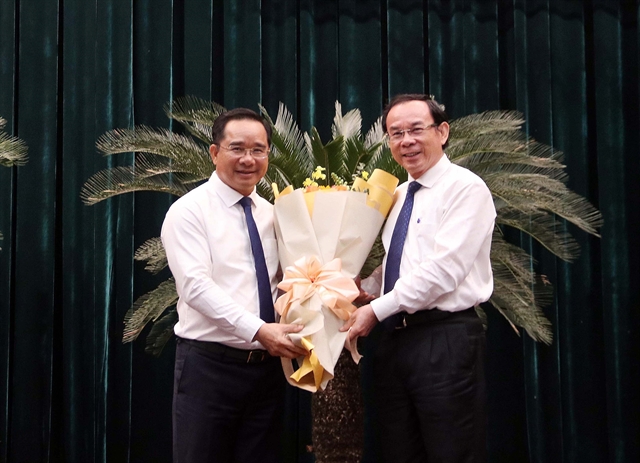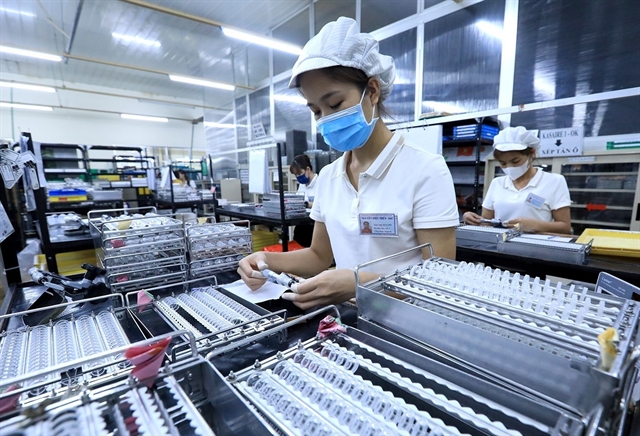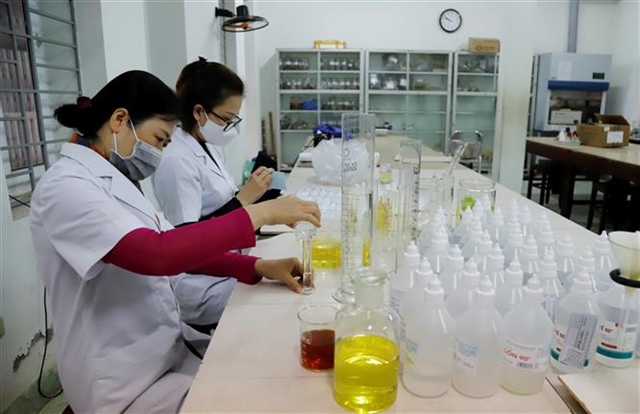 Life & Style
Life & Style

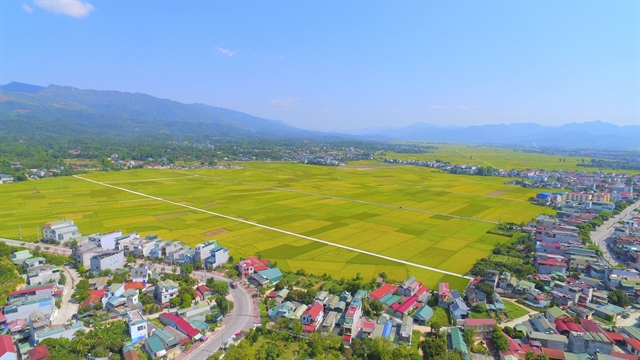 |
| BIRD'S-EYE VIEW: Located at an altitude of more than 400m above sea level, the Mường Thanh Valley stretches over 20km with an average width of 6km. VNA/VNS Photo |
Even seven decades after the first Indochina war, the memories of those who contributed to the reconstruction of the former Điện Biên Phủ battlefield remain deeply etched in the minds of the soldiers.
In those days, they toiled together, their hands shaping the future, with the sweat and blood of peasants-turned-soldiers mingling with the fervour of dedicated youth volunteers [who worked voluntarily as supplies transporters or road builders in service of the military], breathing new life into the land once ravaged by bombs and shells. Today, Điện Biên Phủ City stands as a proud emblem of resilience in the far reaches of our homeland.
Just a brief 20-minute journey from the bustling heart of Điện Biên Phủ lies the site once known as the "Hồng Cúm battlefield", a witness to fierce fights of the past. Yet now, it is adorned with lush rice paddies, fields of golden maize, and quaint homes crowned with vibrant red roofs, masking the scars of tumultuous history.
Trần Văn Đáp, a veteran of the Điện Biên Phủ battle and a former worker at the State-owned Điện Biên Farm, recalled the valour of bygone days.
"Hồng Cúm, alongside Him Lam and Hill A1, stood as an unconquerable outpost of the French army's group of fortresses in Điện Biên Phủ. On the night of May 7, 1954, our forces overran the last stronghold of the French at Hồng Cúm, securing a resounding victory for our army and people in Điện Biên Phủ," Đáp said.
Following the return of peace in northern Việt Nam, Đáp's army unit received orders to relocate to Thanh Hoá Province for new assignments. Yet, by 1958, they were called back to Điện Biên. After enduring days of gruelling marches, the entire unit finally arrived in the former battlefield, pitching camps and focusing on reclaiming land for agriculture while laying the groundwork for a demobbed armymen's plantation.
"Hồng Cúm was little more than a scattering of bamboo houses cloaked in foliage, serving as the humble abodes of the Thai ethnic minority. Life was tough, reliant on hunting and foraging in the forests. The once fortified stronghold of Hồng Cúm, left deserted after the conflict, was littered with barbed wire, landmines, and discarded weaponry, akin to a desolate wasteland," Đáp said.
Military farm
Thanks to the military's efforts in land clearance and guidance in farming techniques for rice, maize and sugarcane, and even flower – the first seeds of recovery were sown in the war-torn land.
A particularly poignant moment for Đáp occurred in 1960 when he and his unit bid farewell to military service in an official ceremony, transitioning to become workers at the Điện Biên State Farm.
Demobbed soldiers from various units were organised into production teams dispersed among villages and hamlets in the Điện Biên Phủ Valley. Đáp found himself assigned to Team C2, where they worked in Hồng Cúm, Thanh Yên Commune.
In the initial years, while they cleared land and transformed the rugged battlefield into fertile fields, Team C2 also ventured into planting coffee and food crops, and livestock farming to meet the daily needs of the farm's workers.
The establishment of the Điện Biên Military Farm on May 8, 1958, marked a significant milestone under the joint auspices of the Ministry of Agriculture and the military, comprising 1,954 officers and soldiers from the 176th Battalion.
The farm's organisational structure included the headquarters, subsidiary departments, and 23 production units, each designated as a company (referred to as C), tasked with various fields of agriculture production, ranging from crop to livestock farming, product processing, transportation, water management, mechanics, and even construction material production.
Soldiers-turn-farm workers
The soldiers-turn-farm workers were dispersed among villages across the Điện Biên Valley, as well as in the Mường Áng and Tuần Giáo regions. On December 22, 1960, the Điện Biên Military Farm underwent a transformative shift, evolving into the Điện Biên State Farm under the Ministry of Agriculture.
Charged with the ongoing mission of land clearance and expanding arable areas for food crops, the farm embraced the cultivation of coffee with a guiding principle: prioritise food crops, utilise short-term crops to nourish long-term ones, foster the growth of perennial trees, and develop other industries. Simultaneously, they advised local ethnic communities to bolster production and remain prepared for any eventuality in times of conflict.
In 1963, a young man named Đỗ Vũ Xô embarked on a remarkable journey at the age of 20. Serving as Deputy Secretary of the Cooperative Youth Union, he volunteered alongside 300 youths from Hà Nội to construct the Nậm Rốm Irrigation Works in Điện Biên.
 |
| REVITALISED: War veteran Đỗ Vũ Xô (right) and his comrade visited the Nậm Rốm Irrigation Works. Photo baodienbien.com.vn |
"I can still vividly recall the rallying cry of Hoàng Tinh, the chief of the Construction Command, urging us forward: 'For every obstacle we encounter, we must overcome tenfold, with solutions at the ready'," Xô said
Guided by the ethos of 'threefold compensation'– compensation for rain, illness, and air attacks – the youth volunteers dedicated themselves tirelessly, extending their working hours to 10 to 12 hours per day, as if to reaffirm the strength, unity, courage, and unwavering enthusiasm of that remarkable generation of youth volunteers.
"The memory of March 13, 1966, will forever be etched in my heart. On that fateful day, our unit was engulfed in sorrow and loss. Five of my comrades made the ultimate sacrifice while diligently carrying out their duties, as American bombs mercilessly rained down, shattering the construction site of the headwaters dam," Xô said.
"Some were torn apart by bomb fragments, while others were crushed under the weight of the explosives. But it was the fate of Captain Nông Văn Mân that truly broke my heart. As the American aircraft swooped in, he stood at the bunker's edge, urging everyone to seek shelter. In the deafening roar of the explosion, his body was torn asunder by the bombs and mingled with the earth. Their absence is a void that can never be filled. Their sacrifice will forever be ingrained in my memory, haunting me for a lifetime."
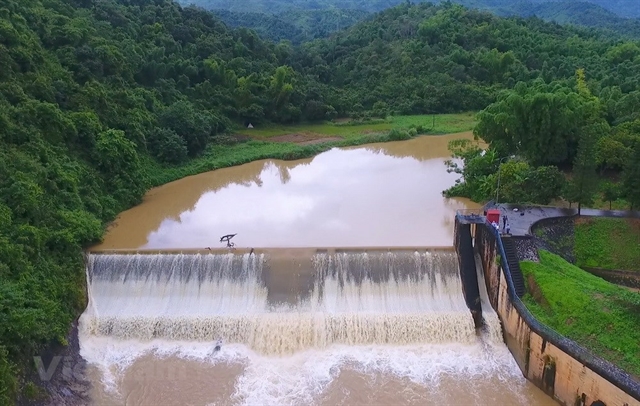 |
| WATER WORKS: The Nậm Rốm Irrigation Works, initiated in 1963 and completed in 1969, plays a crucial role in alleviating famine and revitalising agricultural production. VNA/VNS File Photo |
The Nậm Rốm Irrigation Works, initiated in 1963 and completed in 1969, stands as a testament to the unwavering dedication of over 2,000 officers and soldiers, including more than 800 volunteers from the capital and young people from various provinces downstream such as Hưng Yên, Thái Bình, Nghệ An, Hà Tĩnh, Nam Định, Vĩnh Phúc, and Thanh Hóa, who selflessly answered the call to serve in Điện Biên.
Their collective mission and noble endeavour to expedite the completion of the Nậm Rốm Irrigation Works served as a lifeline for Điện Biên, alleviating famine and revitalising agricultural production.
Bearing fruit
Seventy years later, Điện Biên Province is revolutionising its agricultural landscape, aiming to modernise traditional small-scale farming into a dynamic, market-oriented sector while fostering sustainable practices.
This ambitious restructuring effort is already yielding tangible results, evident in the escalating quality of agricultural goods that cater to diverse consumer demands both locally and beyond. Notably, Điện Biên's agricultural produce is swiftly gaining recognition as a hallmark of quality.
The province's agricultural overhaul encompasses a wide array of sectors, spanning cultivation, livestock, forestry, and aquaculture, with more than 10 distinct product categories. Among these, cultivation stands out as a beacon of progress. Over the past few years, nearly 3,000 hectares of under-performing rice paddies and crop fields have undergone a transformation, transitioning to more economically viable alternatives like fruit orchards, macadamia groves, medicinal herbs, and timber cultivation.
One success story emerges from Tuần Giáo District, where macadamia trees have flourished under favourable climatic and soil conditions. Buoyed by this success, the district expanded its macadamia cultivation in 2023. Through the strategic allocation of resources and concerted support from various national programmes, nearly 980 hectares of new macadamia plantations have taken root across several communes, heralding a promising harvest.
The meticulous care and protection afforded to these newly established macadamia orchards have borne fruit, quite literally. Exceptional growth rates, with seed germination and shoot development exceeding 98 per cent, underscore the project's success. Presently, nearly 1,000 hectares of macadamia cultivation across the district have been harvested, yielding an estimated 3,000 tonnes of fresh produce in 2023 alone.
Meanwhile, the Mường Thanh Valley, spanning 4,100 hectares in Điện Biên District, has emerged as a key agricultural hub in the province. In recent years, the district has prioritised agricultural restructuring for sustainable growth.
Value-added production
Initiatives like the "Large Rice Fields" project aim to produce high-quality rice while bolstering the province's rice brand. Additional efforts include projects focused on adopting advanced scientific techniques in rice cultivation, further enhancing production capacity.
To propel agricultural transformation, Điện Biên has actively facilitated information dissemination on land planning and investment opportunities, fostering agricultural enterprise. By the close of 2023, four investment projects in agriculture and rural development had received approval, bringing the total tally of such enterprises to 30, concentrating on livestock, forestry, and high-value crops.
According to Trần Văn Thượng, deputy director of the Department of Agriculture and Rural Development, the province's agricultural structure has steadily shifted toward value-added production.
In 2023, the estimated total production value reached nearly VNĐ15 trillion, marking a 7.5 per cent increase from the previous year, with the agricultural, forestry, and aquatic sectors collectively expanding by nearly 3.5 per cent. The One Commune One [Speciality] Product (OCOP) initiative has played a pivotal role, with numerous products evolving into prominent market players.
Lê Thành Đô, chairman of the People's Committee of Điện Biên Province [provincial government], reflected on the transformative journey that began in 2015.
"Over the span of eight years, the agricultural landscape has undergone a remarkable metamorphosis, transitioning towards a more commercially viable model. This evolution has revitalised rural areas and elevated living standards for farmers," he said.
Today, Điện Biên's agricultural bounty finds its way onto shelves in supermarkets and retail outlets both within and beyond the province.
As of 2023, the province boasts 77 OCOP-certified items, with 48 communes meeting or exceeding new rural standards, reflecting significant progress.
This transformation has uplifted both material and spiritual wellbeing, with rural incomes averaging VNĐ26 million annually, and the poverty rate plummeting by nearly 37 per cent.
Rural Điện Biên is witnessing a renaissance, characterised by vibrancy and prosperity, while signalling a promising future for its agricultural sector. VNS

